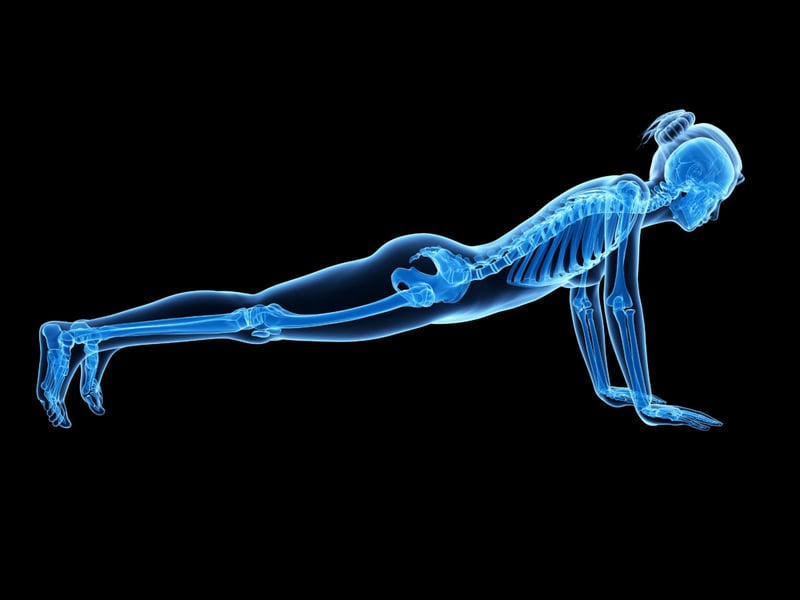
Pontillo, M. & Sennett, B. (2020). Repeatability of Sway Measures in Upper Extremity Weight-Bearing. The International Journal of Sports Physical Therapy, 15(5), 698-702
Upper Extremity Sway Test (Plank Scan) was ADEQUATELY RELIABLE
Resultant Sway Velocity was found to have GOOD RELIABILITY (ICC (2,1): 0.70)
All other variables were found to have ICC’s ranging from 0.61-0.90, indicating moderate to excellent reliability for all variables
“The results of this study have clinical implications. As these biomechanical measures have good to excellent reliability in normal subjects, they could be utilized to compare upper extremity closed chain function between the extremities.”
Population: 490 healthy Division I athletes were tested for both their dominant and non-dominant upper extremity at one of 2 testing sessions.
The questions covered:
Is an upper extremity sway test performed on a force plate reliable?
Background: Analysis of upper extremity weight bearing ability is important for athletes as some function largely in a closed chain capacity (e.g., wrestling, football, gymnastics); also, all require closed chain upper extremity function during strength and conditioning. Additionally, in a rehabilitation setting, closed chain upper extremity functional testing is often used as a return to play criterion. Lower extremity sway measures (biomechanical and clinical) have been published widely and have established reliability and validity; however, the reliability of upper extremity sway biomechanical measures has not been investigated to date.
Hypothesis/Purpose: The purpose of this study was to determine the repeatability of a variety of force plate measurements during an upper extremity task in an athletic population. It was hypothesized that variables measuring upper extremity sway in a closed kinetic chain position would have excellent reliability.
Study Design: Cross-sectional.
Methods: All data were collected using a force plate system with commercially available software. Four hundred and ninety healthy Division I athletes were tested for both their dominant and non-dominant upper extremity at one of two testing sessions. Subjects were instructed to stay as still as possible while maintaining a full plank position with one upper extremity on the force plate and the contralateral upper extremity behind their back. Two, 20-second trials were performed for each extremity. Variables measured included average sway velocity (ASV), sway velocity in medial-lateral (SVML) and anterior-posterior (SVAP) directions, sway velocity at 1st and 2nd time intervals for AP (VAP1 and 2) and ML (VML1 and 2) directions, and sway frequency in the AP direction for 1st and 2nd time intervals (FreAP1 and 2). Intraclass correlation coefficients (ICC(2,1)) and their 95% confidence intervals were calculated for all force plate variables for 980 limbs.
Results: No difference was seen between left and right extremities for any measure (p > 0.05). ICC’s ranged from 0.61-0.90 for all variables, indicating moderate to excellent reliability for all variables.
Conclusion: Upper extremity sway biomechanical variables using a force plate system have moderate to excellent reliability. These results are important prior to validation and clinical utilization of these measures including baseline testing, return to play guidelines, and injury prevention parameters.